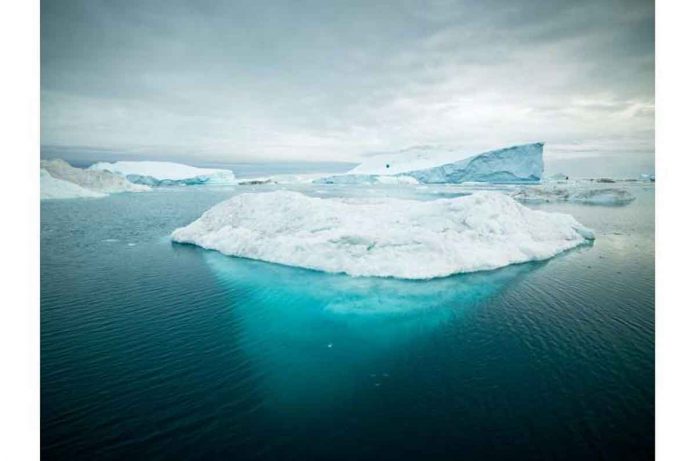Two widely used computer models that predict summer melt pond formation on sea ice overestimate their extent, according to new research, a key finding as scientists work to make accurate projections about Arctic climate change.
The discovery is based on data collected during a year-long expedition aboard the research vessel Polarstern. The ship was allowed to freeze in place in the Arctic for the Multidisciplinary Drifting Observatory for the Study of Arctic Climate expedition, or MOSAiC, from September 2019 to October 2020.
Melinda Webster of the University of Alaska Fairbanks Geophysical Institute led the NASA-funded research, which compared computer model assessments to observations made during the expedition’s final four months. Webster, a research assistant professor, was on board the Polarstern for several months.
In May, the findings were published in the journal Elementa.
“No model is perfect,” said Webster. “This study employs a combination of surface-based, airborne, and satellite data to reveal the possible imperfect representation, or missing physics, of sea-ice melt processes, on which we can concentrate our efforts.”
Melt ponds form when melting snow and sea ice collects in surface depressions.
The size and timing of melt pond formation affect surface albedo, which controls the amount of solar radiation reflected from the surface. Ponds have a lower albedo, which allows solar radiation to be absorbed and transmitted to the seawater below.
Increased solar energy absorption accelerates upper-ocean warming and sea ice melt. It may also promote the growth of certain phytoplankton species that are more adapted to higher light levels in the upper ocean. This has consequences for the rest of the food chain.
The net change in new ice growth versus ice melt is also affected by the amount of absorption.
The study used field data from multi-kilometer surveys across the frozen icescape during the summer melt from June to July 2020 on one ice floe and the autumn freeze-up from August to September 2020 on another floe.
These measurements were compared to airborne and satellite imagery to reveal the coverage of melt ponds in the larger region, and then the computer model predictions were examined.
During the summer, melt ponds covered 21% of the observed area, while the two models predicted 41% and 51%.
“By improving the representation of key physical processes in models, we expect the models to more reliably simulate climate states regardless of time period—past, present, or future,” Webster said.
Webster’s research into melting Arctic Sea ice continues.

